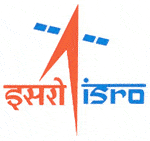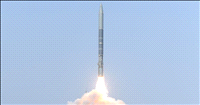In less than 48 after the successful launch of GSAT-6A, India’s most powerful communication satellite, on Thursday, the Indian Space Research Organisation (Isro) on Saturday said it lost contact with the satellite.

Isro said it successfully completed the first orbit raising operation of GSAT-6A at 9.22 am on Friday, which saw the satellite changing its closest and farthest point from earth besides changing its inclination.
The first orbit raising manoeuvre was a success, and the satellite reached the right spot as intended, a source said, adding that the LAM (liquid apogee motor) engine also worked perfectly.
Isro said it also successfully completed the second orbit raising manoeuvre at 10.51 am on Saturday as scheduled, and the agency received data from the satellite for about four minutes, but, minutes after, it went blank, sources said.
“The second orbit raising operation of GSAT-6A satellite + has been successfully carried out by LAM Engine firing for about 53 minutes on March 31, 2018 in the morning. After the successful long duration firings, when the satellite was on course to normal operating configuration for the third and the final firing, scheduled for April 1, 2018, communication from the satellite was lost. Efforts are underway to establish the link with the satellite,” Isro said on Sunday, after remaining incommunicado on Saturday.
This is the second mission failure for Isro in six months, with the previous one being the PSLV-C39 mission which failed to open its heat shield and put Isro’s navigation satellite IRNSS-1H into orbit (
See:
Isro's IRNSS satellite launch fails).
Initial analysis points to a power system failure, but Isro has not officially confirmed anything. The Times of India said the agency’s new chairman K Sivan held a marathon teleconference with senior scientists.
While Isro’s GSAT-6A launch was the first satellite launch after Sivan took charge, the mission was conceived and developed much before he took over as Isro chief.
GSAT-6A, is a high power communication satellite which was to have a mission life of about 10 years. It was to provide mobile communication for India with multi-band coverage facility — five beams in S-band and one beam in C-band.
To enable the satellite provide mobile communication through handheld ground terminals, the satellite has a six-metre wide antenna — the biggest used by an Isro communication satellite so far – which is meant for the S-band communication.
Isro did not issue an official update of positioning of the satellite as is its practice. The agency updates every manoeuvre of the satellite until it reaches its final destination and then gives updates on the health and other activities.
 Isro said it successfully completed the first orbit raising operation of GSAT-6A at 9.22 am on Friday, which saw the satellite changing its closest and farthest point from earth besides changing its inclination.
Isro said it successfully completed the first orbit raising operation of GSAT-6A at 9.22 am on Friday, which saw the satellite changing its closest and farthest point from earth besides changing its inclination.





























